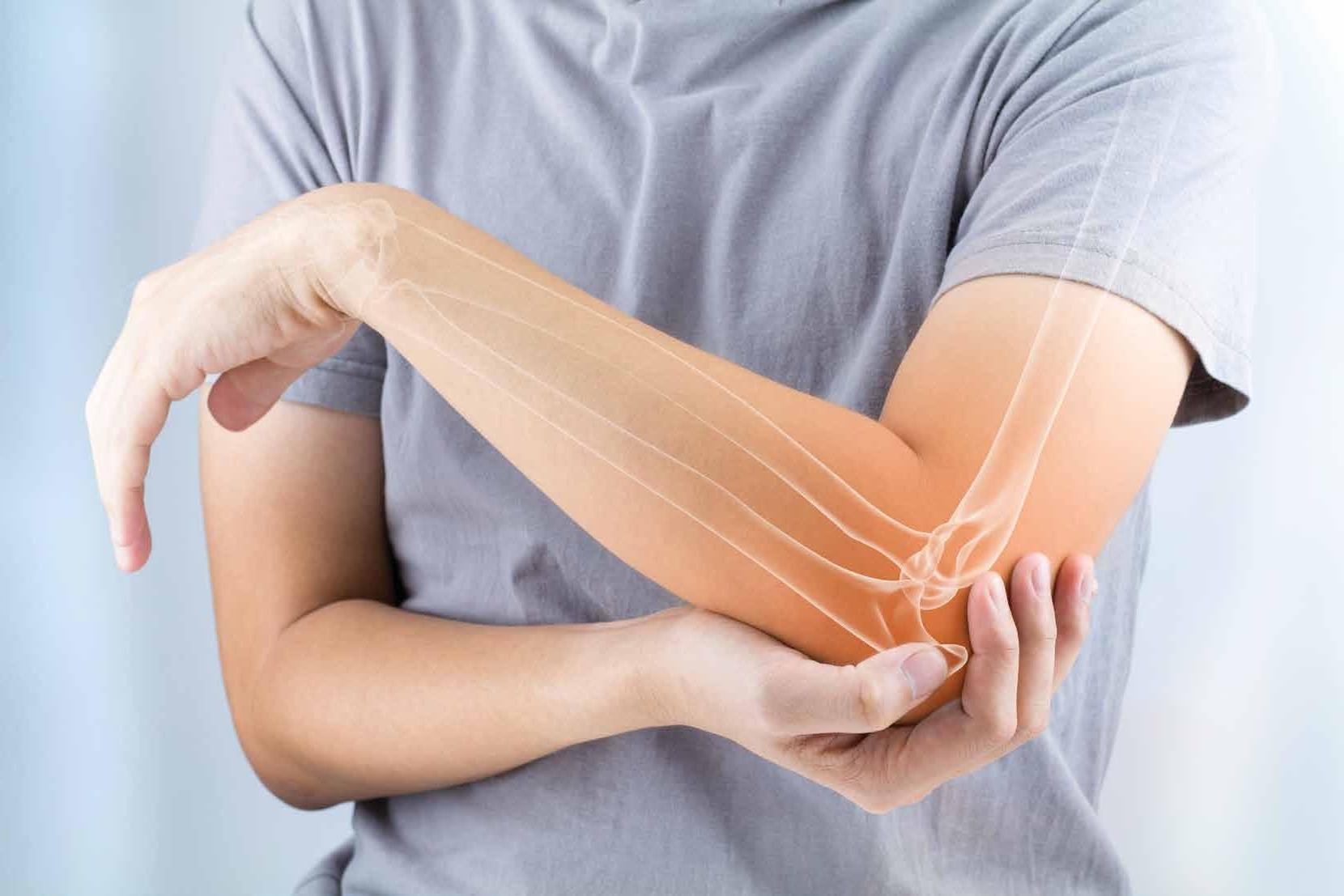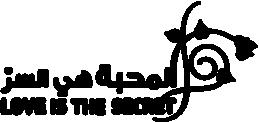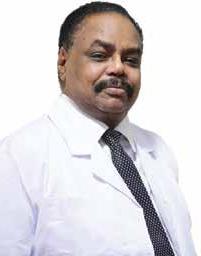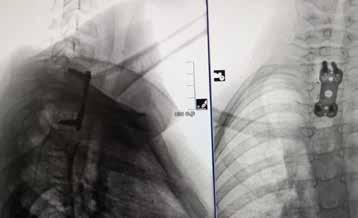
8 minute read
How to treat obesity in children
Dr. Sura Yasin Noori Al Jawadi
Consultant Pediatrician at Al Ahli Hospital
Advertisement
What is the definition of obesity in children?
It is an increase in fatty tissue in the child's body in relation to age and height.
1. Measuring weight and comparing it to standard medical weights tables based on age, height and gender. 2. Measuring the thickness of the skin in special areas of the arms and abdomen and comparing it with special tables in which it is possible to calculate the percentage of the amount of fat in the body. 3. Calculating the body mass index (BMI) by dividing the body weight in kilograms by the square of height in meters. There are tables for children.
What are the causes of obesity in children?
Pathological causes of obesity in children:
1. Diseases of the endocrine glands (thyroid hormone deficiency and excess adrenal gland secretion), which in turn lead to the emergence of hormonal disorders that cause weight gain. 2. Treatment with cortisone drugs in high doses for a long time 3. Hereditary diseases and the genetic predisposition to obesity.
Causes resulting from wrong behaviors:
1. Malnutrition as a result of eating fast and ready meals or as a result of the mother's pressure on the child to eat a lot of foods rich in calories that are incomplete with nutrients or surplus to the child's needs. 2. Neglecting to eat breakfast, which leads to the suppression of the child's metabolism, or giving the child sugary foods that speed up the rise in blood sugar and decrease it again, so that the 3.
4. child feels more hungry. Lack of exercise, which leads to reducing the burning of calories and storing them in the form of fats and fats that are difficult to burn. Using electronic devices for long periods or sitting for a long time in front of the television.
What are the most important methods for treating obesity in children?
• Preventing children from consuming soft drinks and sweetened juice products in abundance, as they contain a lot of sugars that turn into fats. • Urging children to drink water a lot, as it is one of the most important nutrients for the child and an essential component for all organs and systems of the body and does not contain any calories, but the body needs it. • The family should deal with milk for the child as food, not a drink, and the child must be urged to drink milk and eat dairy products, as they are very necessary as they contain nutrients such as vitamins, minerals, protein and fibers. • Urging the child to eat fresh home fruits and juices, especially between meals, as this reduces the child's feeling of hunger and prevents him from pouncing on food and consuming it in a great quantity. It is preferable not to add sugar to the juice. • The child should be accustomed to chew food well, so that we can improve the digestion process, and reduce the amount of fats that enter the body. • The amount of food must also be determined in both the lunch and dinner meals for children with obesity. • It is also recommended to provide the child with plenty of high-fiber foods such as legumes, vegetables and whole grains. • Parents are role models for the child, and by gathering family members at
the dining table naturally, the child will imitate them without exaggerating in issuing orders to eat certain things and avoid eating other things, and it is also worth involving the child in choosing food and meals and informing him of the importance of the benefits of healthy food. A child with obesity should take food at school with him from home with healthy food instead of buying biscuits, soft drinks and potato chips. In order to avoid the child's feeling of boredom from repeated same foods , he must participate in choosing and diversifying food, provided that it conforms to the specifications that help him get rid of the obesity problem. Parents should reduce their taking children to fast food restaurants, and it is preferable to choose restaurants that provide healthy meals for children, such as serving grilled potatoes or corn instead of French fries. The child should be taken to a specialist doctor to study the child's condition closely to help with the aim of finding solutions to get rid of the problem of obesity.
How to prevent obesity in children?
• The child should be breastfed at least till the age of one year, and it is preferable to continue to two years. Commit to eating breakfast on a daily basis and not to eat late or at least 3 hours before bedtime. Eat fat-reduced dairy products instead of full-fat for children who suffer from obesity after the age of seven. Eat foods rich in fiber to regulate and improve the digestive process. Eat a lot of vegetables and fruits. Doing sports on a daily basis or playing for at least an hour every day, and the parents must be present. Regular examination by the doctor to compare weight and growth. Educating the family on how to deal with an obese child and not focusing too much on the child's eating habits, which leads to adverse results. Stressing that parents not use food as a reward or punishment method to modify the behavior of the child.
Each of this advice is no less important than the other, but of course it is not necessary to be strict about applying it all at the same time, so that the child does not consider it as a punishment. We have to make him feel comfortable to understand that there is a problem and we need to solve it without harming his self-esteem. Of course, the opinion of the specialist and following up on the case should not be underestimated at all. MEASURING THE THICKNESS OF THE SKIN IN SPECIAL AREAS OF THE ARMS AND ABDOMEN AND COMPARING IT WITH SPECIAL TABLES IN WHICH IT IS POSSIBLE TO CALCULATE THE PERCENTAGE OF THE AMOUNT OF FAT IN THE BODY.





Dr. El Fatih Bashir Elmalik
Consultant Neurosurgeon at Al-Ahli Hospital

A critically-located rare spinal tumor, successfully removed in a 10-year-old child, at Al-Ahli Hospital
This 10-year-old child presented to Al-Ahli hospital has been complaining of severe upper back pain for 2 months. This was worsening progressively to the extent that it disturbed the child’s sleep and prevented her from going to school. Lately, she started to have difficulty walking due to weakness in her lower limbs.
Of note was that the child had been taken to several medical centers where she underwent repeated radiological investigations to no avail. The child’s parents stated that she was, indeed, suffering from severe upper back pain which made it hard for her to even breathe. She was eventually seen in the Orthopedic Clinic in Al-Ahli Hospital when a thoracic Spine MRI revealed an abnormality of the second thoracic vertebral body, T2. She was accordingly referred to the Neurosurgery Clinic for further management. As noted in the MRI and CT scans of the spine, the second thoracic vertebral body was collapsed due to tumor invasion. There consequent compression of the spinal cord.
The decision of surgical intervention was promptly taken with a view to relieve the child’s pain by removing the pressure from the spinal cord, repair and fixation of the damaged vertebral body and confirmation of the diagnosis by laboratory studies of the tumor material. The indications for surgery and goals were explained to the parents.
The main challenge in this case is how to safely get access to this tumor. That was because of the anatomical location of this part of the spine directly behind the major blood vessels and the heart. Accordingly, the surgical procedure was planned carefully using the CT-scan and MRI. A team of neurosurgeons and vascular surgeons worked together via an approach in the lower part of the front of the neck was chosen to reach the spine in the upper part of the chest. Using the operating microscope and micro-instruments total resection of the tumor as much as possible with adequate relief of the spinal cord. Repair of the damaged spinal column was achieved by using a special replacement device that was anchored in place by plate and screws under X-ray guidance. Thus, surgery allowed immediate decompression of the spinal cord and restoration of the normal anatomy of the spinal column. The laboratory workup confirmed the benign, yet rare nature of the disease known as Langerhans Cell Histiocytosis – Eosinophilic Granuloma. The child had an uneventful course after surgery. Her disabling pain disappeared promptly and she was fit for discharge 3 days following surgery.
Post-op X-rays showing past of the hardware fixation of the spine (A) CT-Scan of the Dorsal Spine, (B) MRI of the Dorsal Spine showing the collapsed T2 vertebral body (yellow arrows) and compression of the spinal cord












